
Do you have a question about the YASKAWA VS-656MR5 and is the answer not in the manual?
| Model | VS-656MR5 |
|---|---|
| Category | Inverter |
| Rated Output Power | 5.5 kW |
| Enclosure Rating | IP20 |
| Overload Capacity | 150% for 60 seconds |
| Control Method | V/f control, vector control |
| Cooling Method | Fan cooling |
| Protection Features | Overcurrent, overvoltage, undervoltage, overheat, short circuit |
| Operating Temperature | -10 to +50°C |
| Vibration Resistance | 5.9 m/s² (0.6 G) |
Important safety instructions and guidelines for handling and operating the equipment.
Checks to perform when receiving the inverter and converter units.
Guidelines and precautions for installing the inverter and converter.
Procedure and warnings for safely disconnecting the digital operator.
Precautions and specifications for wiring the main and control circuits.
Steps and checks for performing trial operation of the system.
Procedures for routine maintenance and inspection of the units.
Additional important notes and precautions for usage.
Important precautions for using the motor safely and effectively.
Conditions and precautions for storing the motor unit.
Guidelines for safely transporting the motor unit.
Precautions for installing the motor and connecting it to machinery.
Details on the warranty period, scope of coverage, and inspection services.
Conditions and situations not covered by the product warranty.
Limitations on product usage and applications, especially concerning safety-critical systems.
General introduction to the VS-626M5 Inverter and VS-656MR5 Converter.
Highlights the key features of the AC drive system for machine tools.
Lists available Inverter models for different voltage classes and system types.
Lists available Converter models for different voltage classes and system types.
Identifies the main components of the Converter and Inverter.
Details the appearance and components of the Converter unit.
Details the appearance and components of the Inverter unit.
Checks to perform upon receiving the inverter, converter, and motor.
Guidelines for selecting and preparing the installation environment.
Specifies required clearances for effective cooling and installation.
Procedure for connecting and mounting the optional digital operator.
Precautions for mechanical design and installation of the motor.
Shows standard connections to peripheral units for external heatsink cooling.
Provides wiring diagrams for stand-alone and NC systems.
Details specifications, functions, and wiring of main circuit terminals.
Explains connections, functions, and precautions for control signals.
Checkpoints for verifying wiring correctness after installation.
Detailed information on sequence input signals for drives and NC systems.
Information on using analog speed reference signals for stand-alone drives.
Guidance on using digital speed references for stand-alone drive systems.
Details on sequence output signals for stand-alone and NC systems.
Information on analog output signals for speed and load monitoring.
Explains the input circuit configuration for motor encoders.
Details the output circuit configuration for encoder signals.
Overview of the Digital Operator's capabilities and functions.
Explains the display modes available on the Digital Operator.
Describes operations using the Digital Operator keys and their displays.
Shows the initial display indications when the control power supply is turned on.
Instructions on how to switch between different display modes.
Details for checking operational status and input signal status.
Procedure for checking and changing control constants.
How to operate the system using commands from the Digital Operator.
Explains how fault codes are displayed when protective functions activate.
Details on how to view recorded fault data.
Describes the overall procedure for trial operation.
Detailed step-by-step guide for performing trial operation.
Explanation of the LED indicators on the converter and inverter.
Guides on setting various constants for optimal operation.
Highlights the benefits of the winding selection function for constant power drives.
Shows standard connection diagrams for winding selection motors.
Explains motor output and torque characteristics for winding selection.
Describes the timing chart for switching between low-speed and high-speed windings.
Details methods for implementing winding selection control.
Explains winding selection using M codes for machine tool drives.
Describes automatic winding selection using speed detection signals.
Important precautions for designing winding selection control.
Describes the device setup for orientation control using an encoder.
Shows standard wiring diagrams for motor and load shaft encoder connections.
Lists standard specifications for encoder orientation control.
General specifications for encoder orientation devices.
Technical specifications for the load shaft encoder model.
Provides dimensions for the encoder orientation card and load shaft encoder.
Details the terminal arrangement for the load shaft encoder connector.
Key considerations for mounting and wiring the encoder system.
Information on stop position reference signals for orientation control.
Explains the functions of the encoder orientation control.
Details on performing absolute positioning to a specified stop position.
Explains incremental positioning for adding travel to the current stop position.
Important precautions to consider when implementing orientation control.
Step-by-step procedure for adjusting the encoder orientation control mode.
Describes the device setup for orientation control using a magnetic sensor.
Shows standard wiring diagrams for magnetic sensor orientation.
Lists specifications for magnetic sensor orientation devices.
General specifications for magnetic sensor orientation.
Technical specifications for the magnet used in orientation control.
Technical specifications for the magnetic sensor.
Provides dimensions for the orientation card, magnet, and sensor.
Explains connections between devices for magnetic sensor orientation.
Details terminal arrangements for control signal connectors.
Describes mounting diagrams and dimensions for magnets and sensors.
Important precautions for mounting magnets and magnetic sensors.
Explains stop position reference signals for magnetic sensor orientation.
Details the control mode functions of the magnetic sensor orientation.
Describes fixed position stopping using the magnetic sensor.
Explains user-set position stop control using incremental operations.
Step-by-step procedure for adjusting magnetic sensor orientation control.
Lists and explains user-configurable constants for the inverter.
Details constants for encoder orientation control.
Details constants for magnetic sensor orientation control.
Describes the operating status displays for the inverter.
Lists status displays for encoder orientation control.
Lists status displays for magnetic sensor orientation control.
Displays for motor temperature and slip frequency.
Overview of troubleshooting procedures and fault displays.
Lists converter faults, their meanings, and corrective actions.
Lists inverter faults, their meanings, and corrective actions.
Troubleshooting guide for motor faults and corrective actions.
Basic procedures for maintaining and inspecting the inverter and converter.
Items to check during normal system operation.
Items to check during periodic maintenance operations.
Schedule for replacing electronic parts based on service life.
Specifications for the inverter and converter drives.
Lists standard specifications for the VS-626M5 inverter series.
Specifies features for winding selection drive series.
Provides dimensions for inverter and converter units.
Panel cutout dimensions for external heatsink cooling models.
Shows calorific values and cooling air speeds for inverter/converter units.
Details the standard specifications for the motors.
Graphs showing output and torque versus speed for motors.
Provides dimensions for standard and winding selection motors.
Information on magnetic encoders used for motor speed detection.
Details the terminal arrangement and dimensions of encoder connectors.
Lists model numbers for spare motor parts.
Procedure for replacing the motor cooling fan.
Specifications for optional units and peripheral devices.
Specifications and connection examples for AC reactors.
Wiring examples and selection tables for circuit breakers and contactors.
Ratings, specifications, and dimensions for winding selection magnetic contactors.
Tables for selecting busbar and cable kits based on unit combinations.
Details on the digital operator and required extension cables.
Lists connector kits required for various inverter and option card combinations.
Specifications for input noise filters to reduce radio noise.
Specifications and dimensions for surge absorbers for inductive loads.
Explains the fundamental principles of inverter drives.
Describes the basic operating principle of an inverter.
Details the configuration of the inverter and converter system.
Explains the characteristics of squirrel cage induction motors.
How to control induction motors using vector control.
Explains torque, motive power, and inertial moment for motor selection.
Guidelines for selecting drive capacity based on load characteristics.
Explains the interface design for input and output signals.
Provides guidance on designing cooling systems for inverter/converter.
Illustrates wiring diagrams for various operational modes.
Shows the internal block diagram of the M5 drive.
Tables for entering and configuring drive specifications.
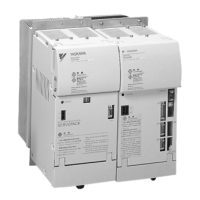

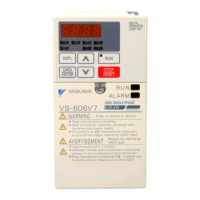
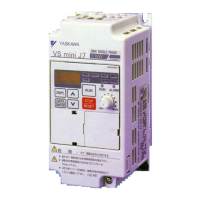
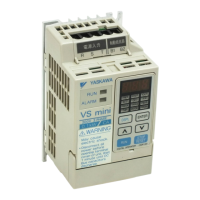
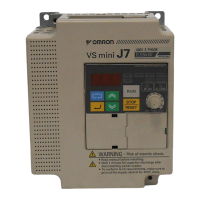
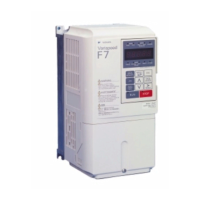
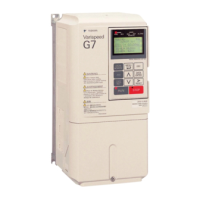
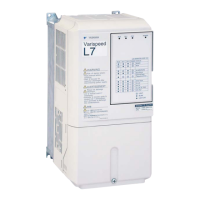
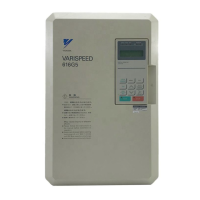
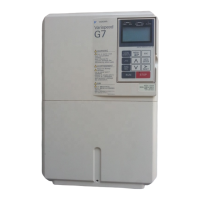
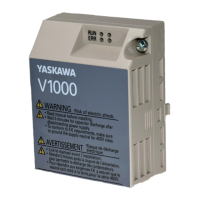
